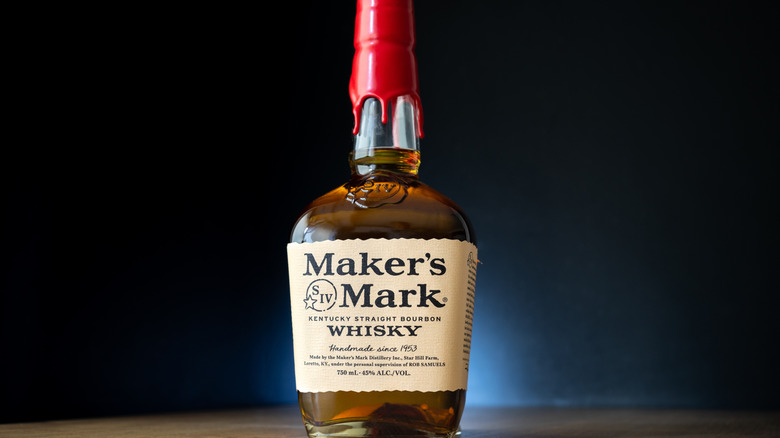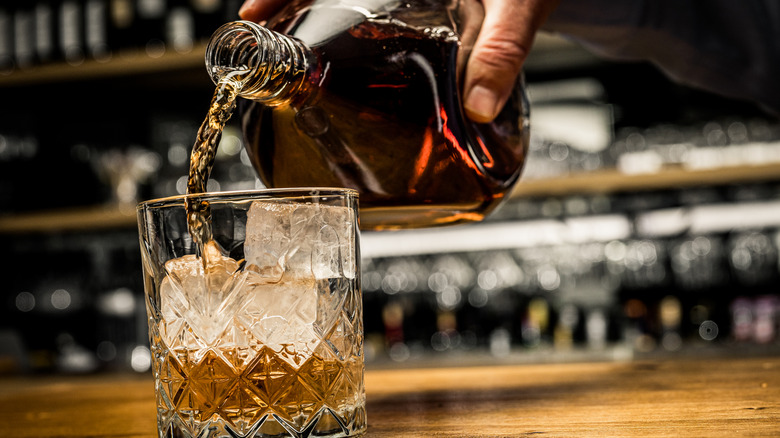Why Maker's Mark Uses 'Whisky' Instead Of 'Whiskey' On Its Bottles
Known to err on the sweeter side when it comes to whiskeys, Maker's Mark is a perennial fan favorite of bourbon drinkers nationwide. Those familiar with the brand (which made our list of best Kentucky bourbons of all time) know that its classic glass bottles sealed with red wax contain a spelling anomaly: "whiskey" spelled without its usual "e." Why? The answer, confirmed by a Maker's Mark post on X, is simple. Dropping the "e" was a style choice made by the family that founded Maker's Mark to honor their Scottish-Irish heritage.
The spelling of whiskey actually reveals a lot about its origins. In Scotland, whiskey (or "whisky" according to Scots) is made through a very specific process involving warming barley over a pile of smoldering peat. As a spirit, whiskey typically refers to either bourbon, which is made primarily from corn, or rye whiskey, which includes either rye mash or rye and malt mash. While Maker's Mark is produced in the United States, the Samuels family, who are behind the Maker's Mark brand, maintained the Scottish spelling as a sly nod to their lineage. The Samuels' ancestors were among the first Scottish-Irish immigrants to arrive in the United States in 1730.
Wait, but isn't Maker's Mark a bourbon?
While Maker's Mark is a bourbon, whiskeys distilled and bottled in Scotland qualify as scotch. Despite using the Scottish spelling of "whisky" on its labels, Maker's Mark was never a scotch. Plus, scotch tends to have a harsh, smoky flavor, vastly different from Maker's Mark's honeyed notes. Maker's Mark is a bourbon. To be classified as bourbon, a whiskey must be created in the United States and be at least 51% corn. Maker's Mark, a Kentucky-based whiskey composed of 70% corn, thoroughly falls into this category.
Originally, Maker's Mark was a rye-based whiskey primarily distributed around the Pennsylvania colonies in the late 1700s. By the mid-20th century, the family business trickled down to Bill Samuels Sr., who had different opinions on whiskey-making. Samuels Sr. sold the family's distillery in 1943, but went back into business after World War II. The trouble was, he disliked his family's booze. To demonstrate his desire to make whiskey differently, legend has it that Samuels Sr. set fire to the only copy of the 170-year-old family recipe.
Different styles of whiskey are made with a distilling process or blend of ingredients that makes them unique. For Maker's Mark, it's the wheat. Determined to create a bourbon he actually enjoyed drinking, Samuels Sr. incorporated red winter wheat. This replaced the bitterness Samuel Sr. so reviled with the mild vanilla flavor associated with the brand today. While this is a far cry from scotch, Maker's Mark maintains the Scottish spelling to ensure they do not completely stray from their roots.

